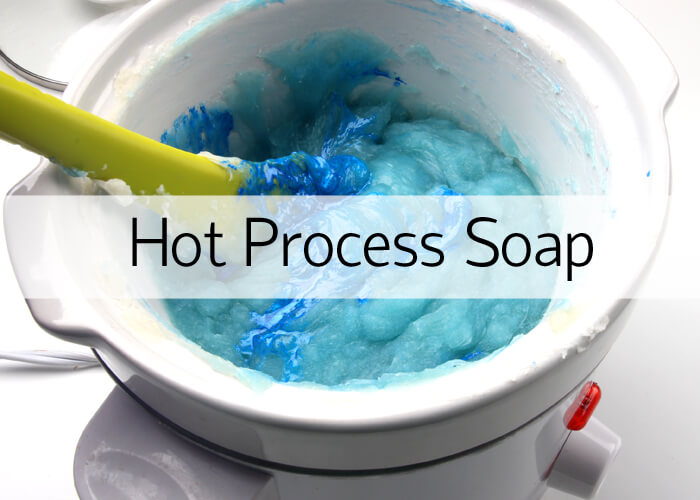











 4
4




 1
1




"The only thing...more expensive than education is ignorance."~Ben Franklin. "We can easily forgive a child who is afraid of the dark; the real tragedy of life is when men are afraid of the light." ~ Plato
 3
3





Pros:
Allows you to customize every single ingredient, including fixed oils.
The additional heat speeds up the saponification process. Three cheers for instant gratification; hot process soap can be cut within one day, and used right away.
The bars have a “rustic” appearance with a less smooth texture than cold process. Whether or not you like this look is a personal preference.
Can be made in a Crock-Pot or double boiler.
The thick texture makes it great for suspending heavier additives.
Generally considered a more “natural” bar of soap.
Clean-up is easier because the soap in the slow cooker/Crock-Pot is already soap.
Cons:
The thick texture of hot process soap makes some swirls and techniques, such as layering, very difficult.
The bars have a “rustic” appearance with a less smooth texture than cold process. Whether or not you like this look is a personal preference.
If your fragrance or essential oil has a low flashpoint, some soapers find the high temperature of hot process tends to “burn off” the fragrance, causing it to fade.
As the soap cooks, it expands. Because of the possibility of it overflowing, it’s important to not leave it unattended.
Difficult (but not impossible) to add fresh ingredients like milk and purees; they tend to scorch during the cooking process.







 6
6




love
 2
2




when you're going through hell, keep going!

 2
2




Meg Mitchell wrote: If the soap is made correctly it will have the same superfat % with both hot and cold process.







 2
2




"The only thing...more expensive than education is ignorance."~Ben Franklin. "We can easily forgive a child who is afraid of the dark; the real tragedy of life is when men are afraid of the light." ~ Plato
 5
5




r ranson wrote:Most people I've talked with who make soap (including many 'professional' soap makers who sell 'natural' soap in the shops here) tell me the following: It's important to add extra fat above and beyond the recipe so that you a) don't risk having the finished soap have any excess lye in it, and b) so that it helps moisturize the skin.
when you're going through hell, keep going!

 1
1




Meg Mitchell wrote:
r ranson wrote:Most people I've talked with who make soap (including many 'professional' soap makers who sell 'natural' soap in the shops here) tell me the following: It's important to add extra fat above and beyond the recipe so that you a) don't risk having the finished soap have any excess lye in it, and b) so that it helps moisturize the skin.
Usually a premade recipe will already include the extra oils (superfatting); if someone is adding even more extra oils than that I could definitely see it getting very greasy and clogging some pipes. :D
I think the chances of mismeasuring will be the same whether you are making hot or cold process soap so if you end up with a fat-heavy cold process soap using the same recipe that produces good hot process soap, I would want to chop that cold process soap bar up and check for lye pockets. If we're talking about cold soapers choosing recipes with a higher fat % then you're probably right. Most hot soapmakers I know of started with cold process and moved to hot process for a specific reason so I would guess on average they're more experienced. (Not that there aren't lots of really experienced cold process soapmakers, just that most of the relatively new soapmakers are also making it cold.)
"The only thing...more expensive than education is ignorance."~Ben Franklin. "We can easily forgive a child who is afraid of the dark; the real tragedy of life is when men are afraid of the light." ~ Plato

| I agree. Here's the link: http://stoves2.com |







